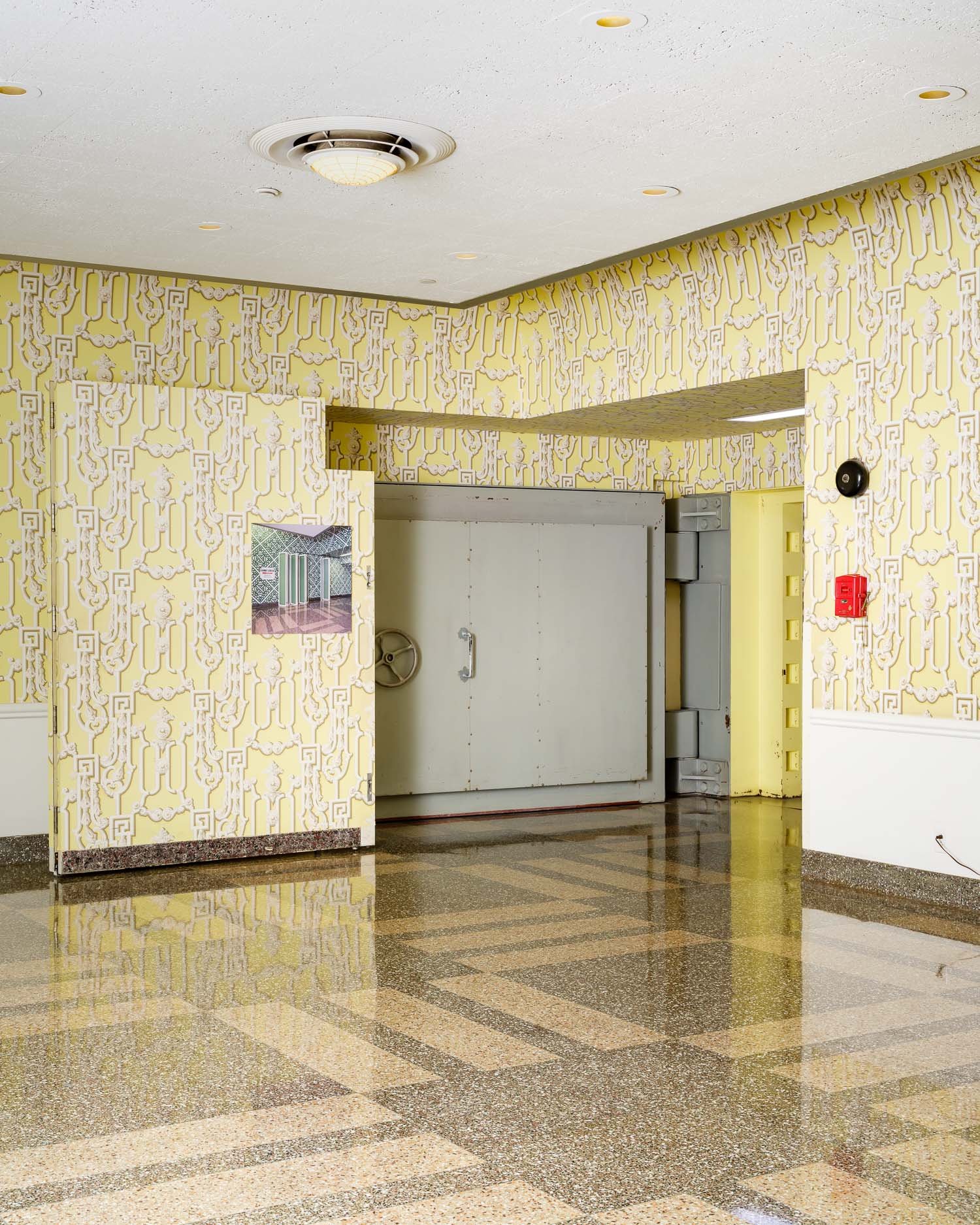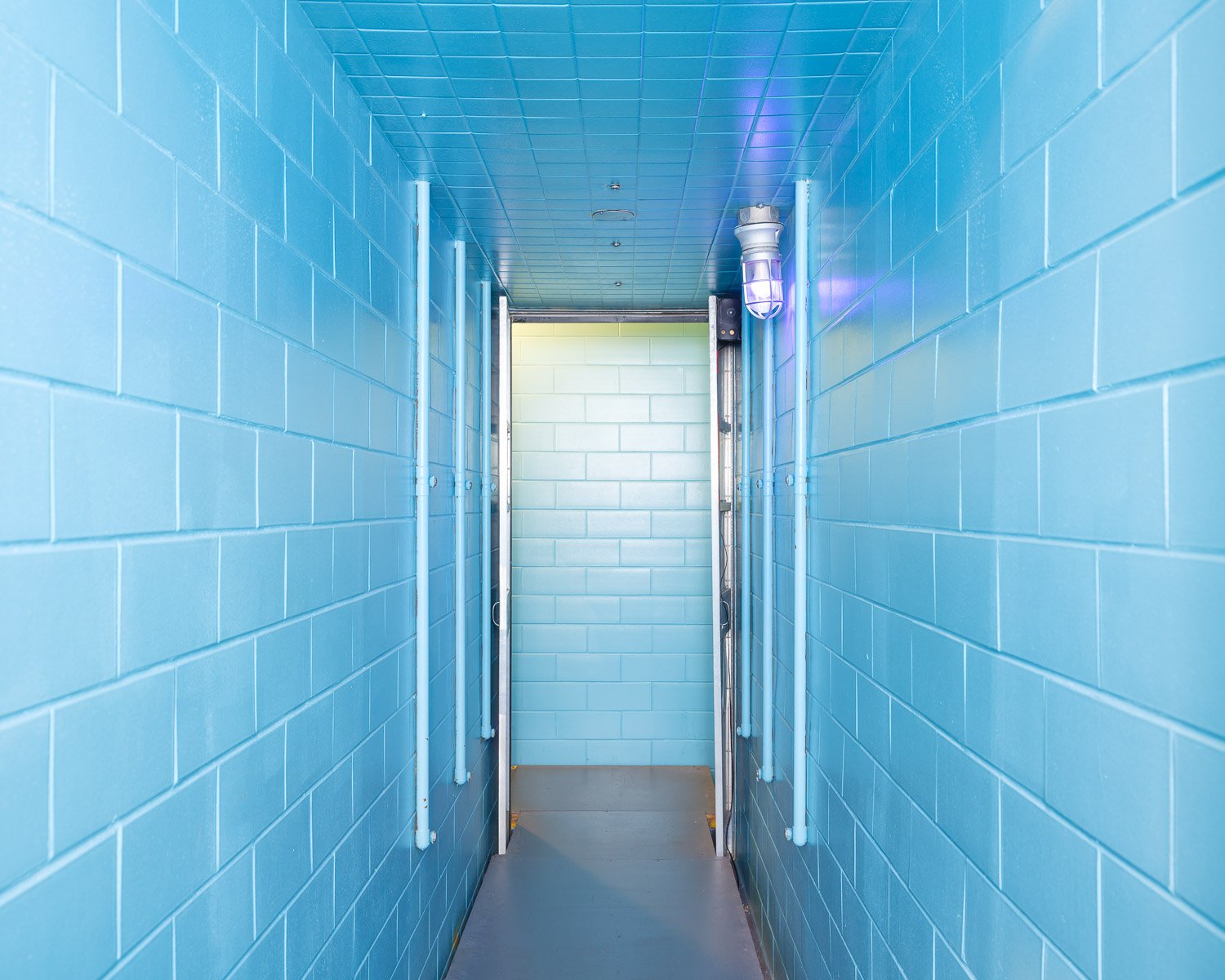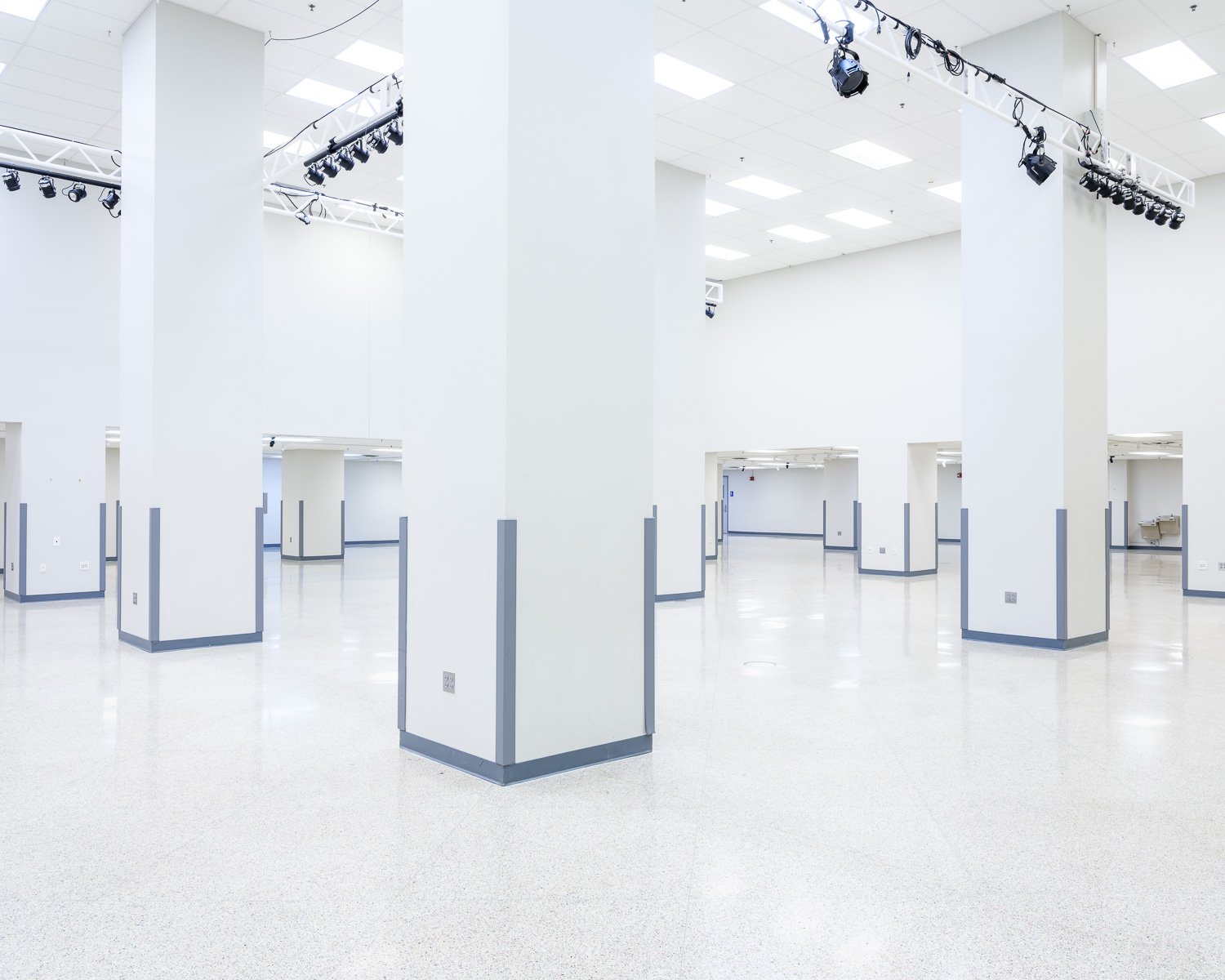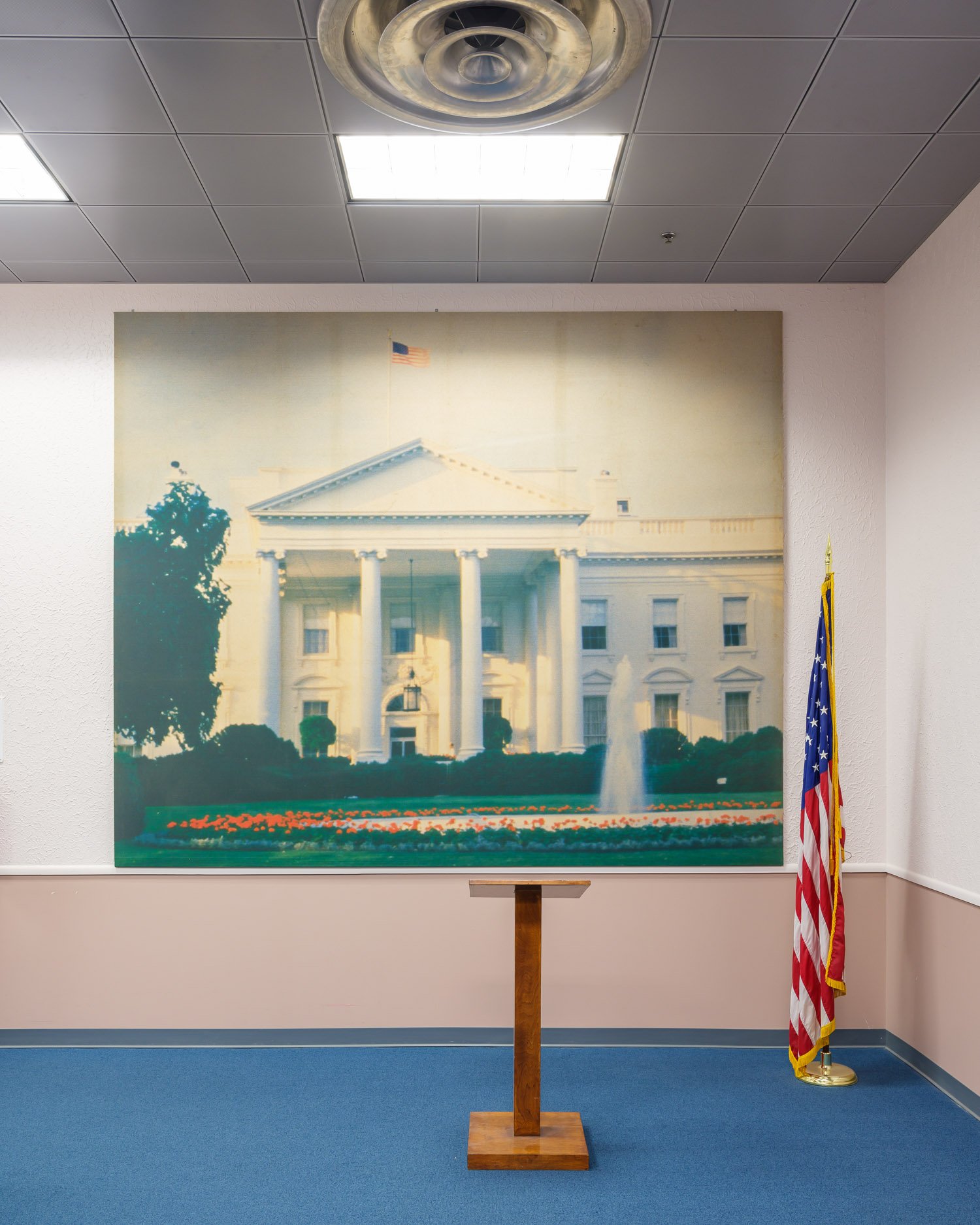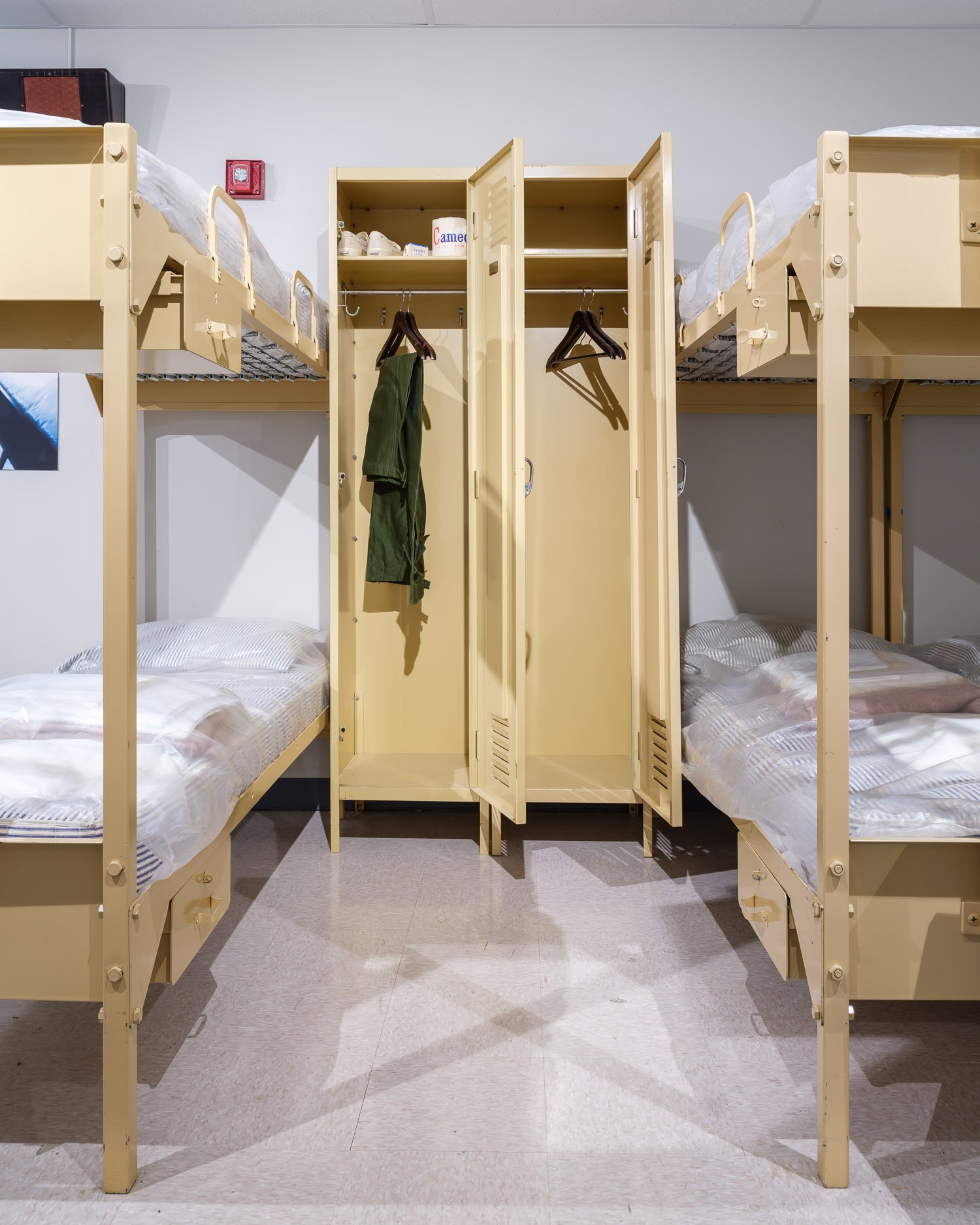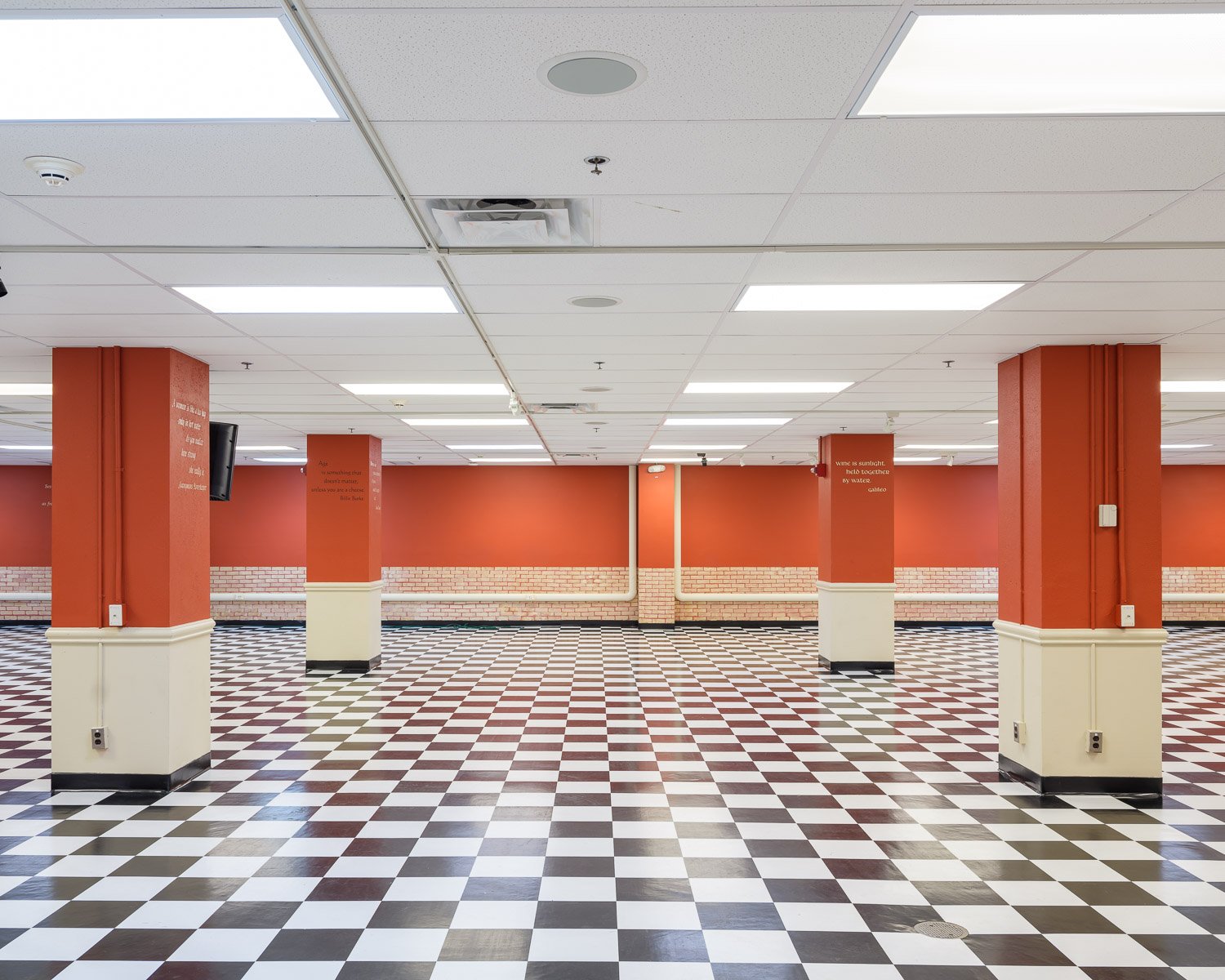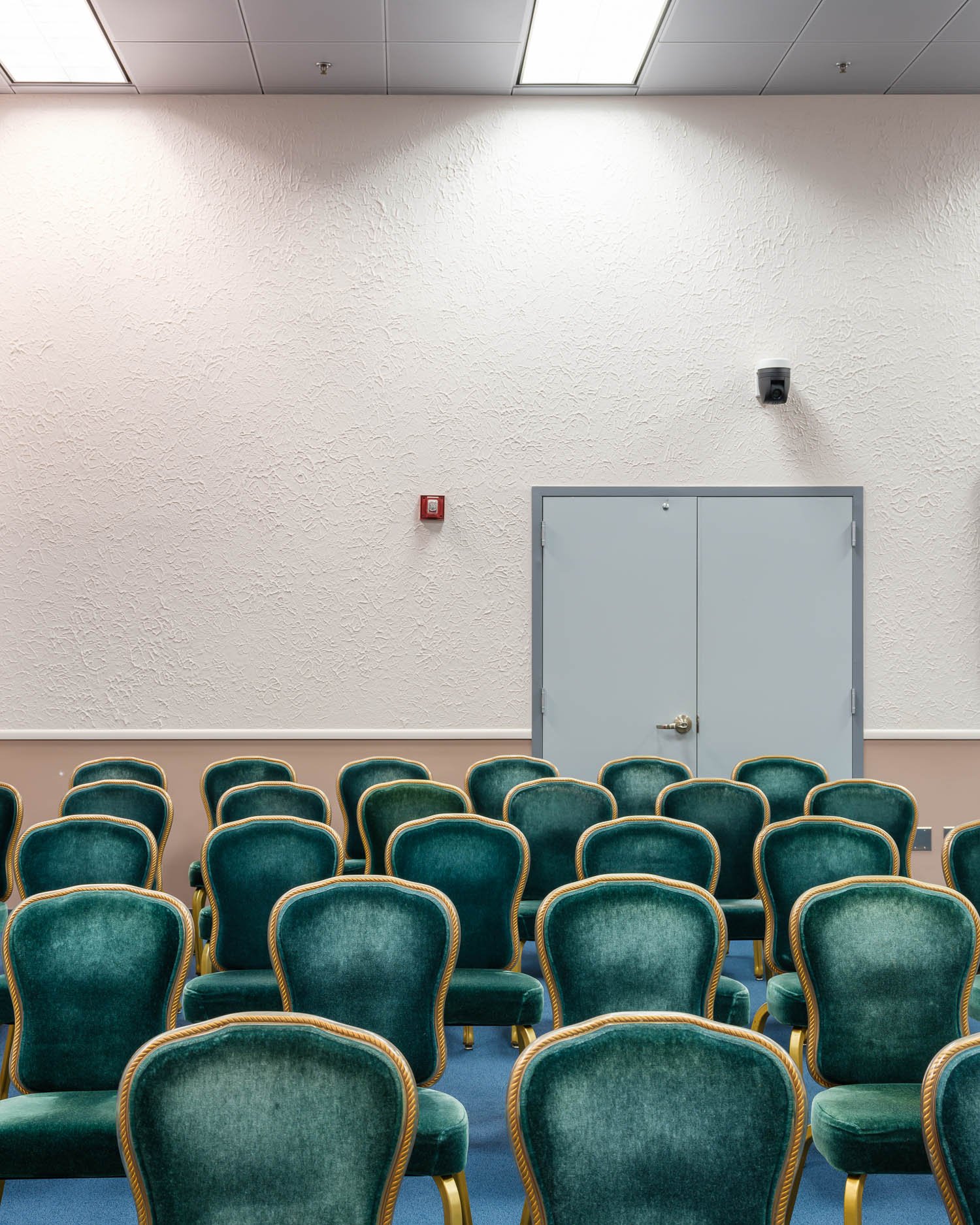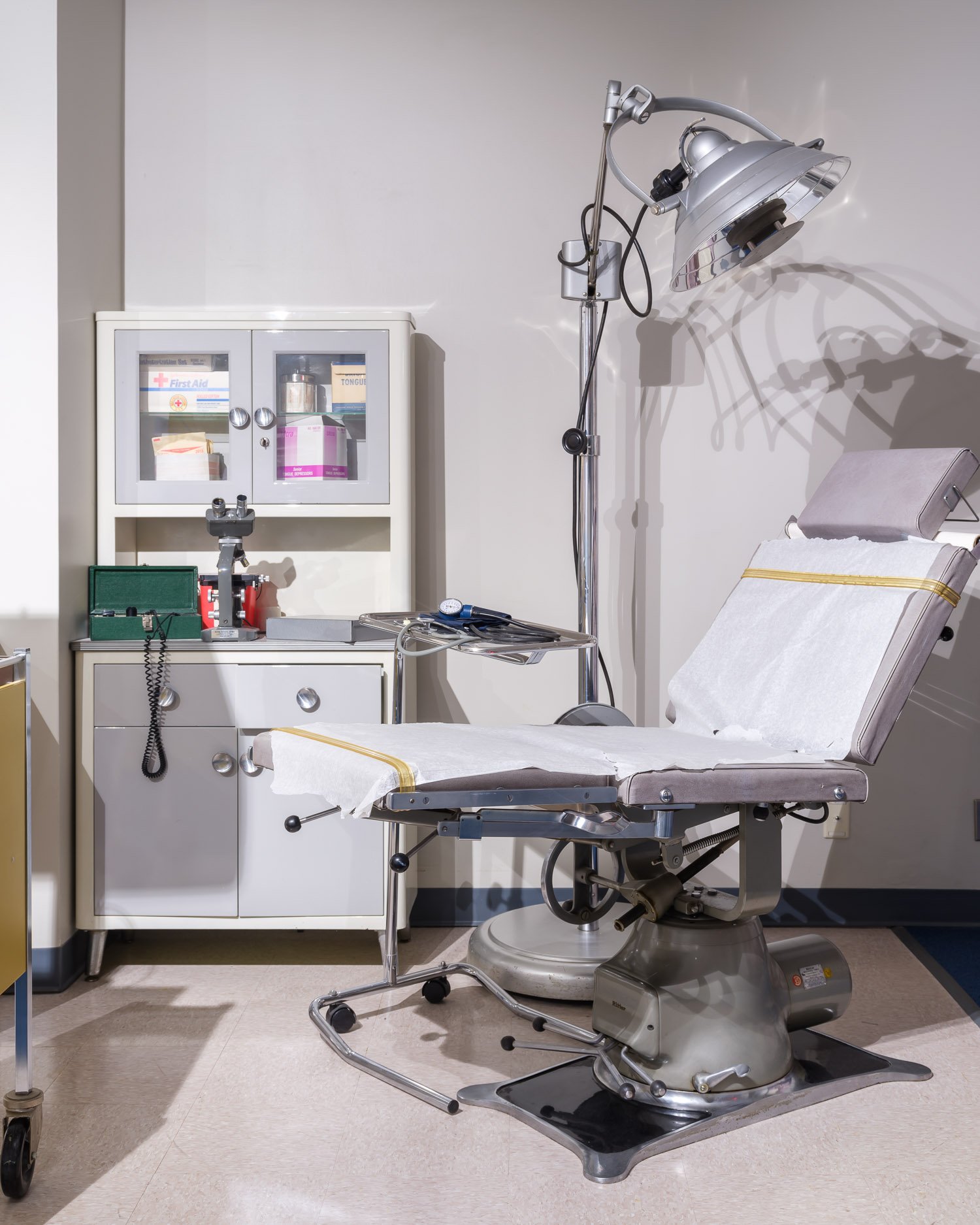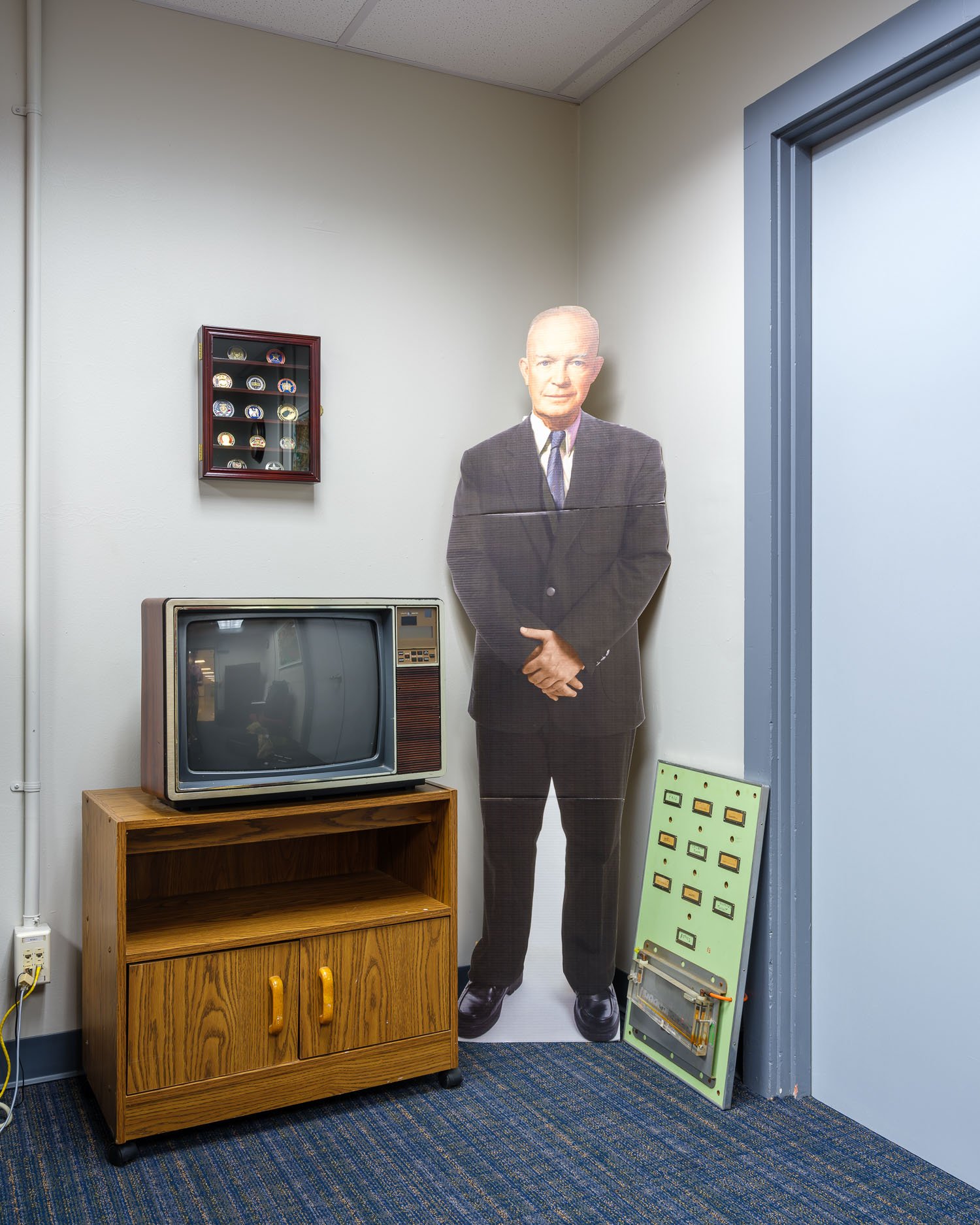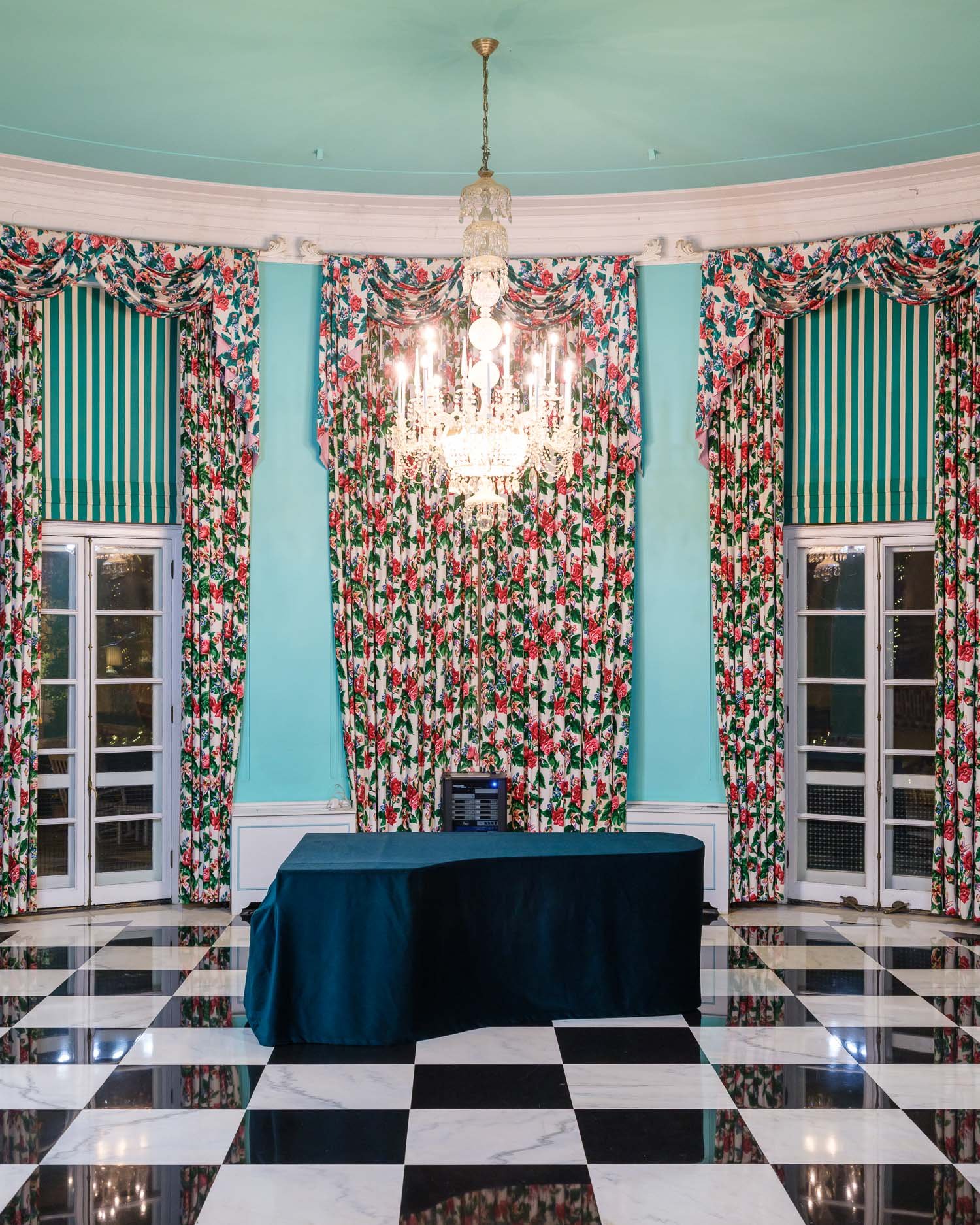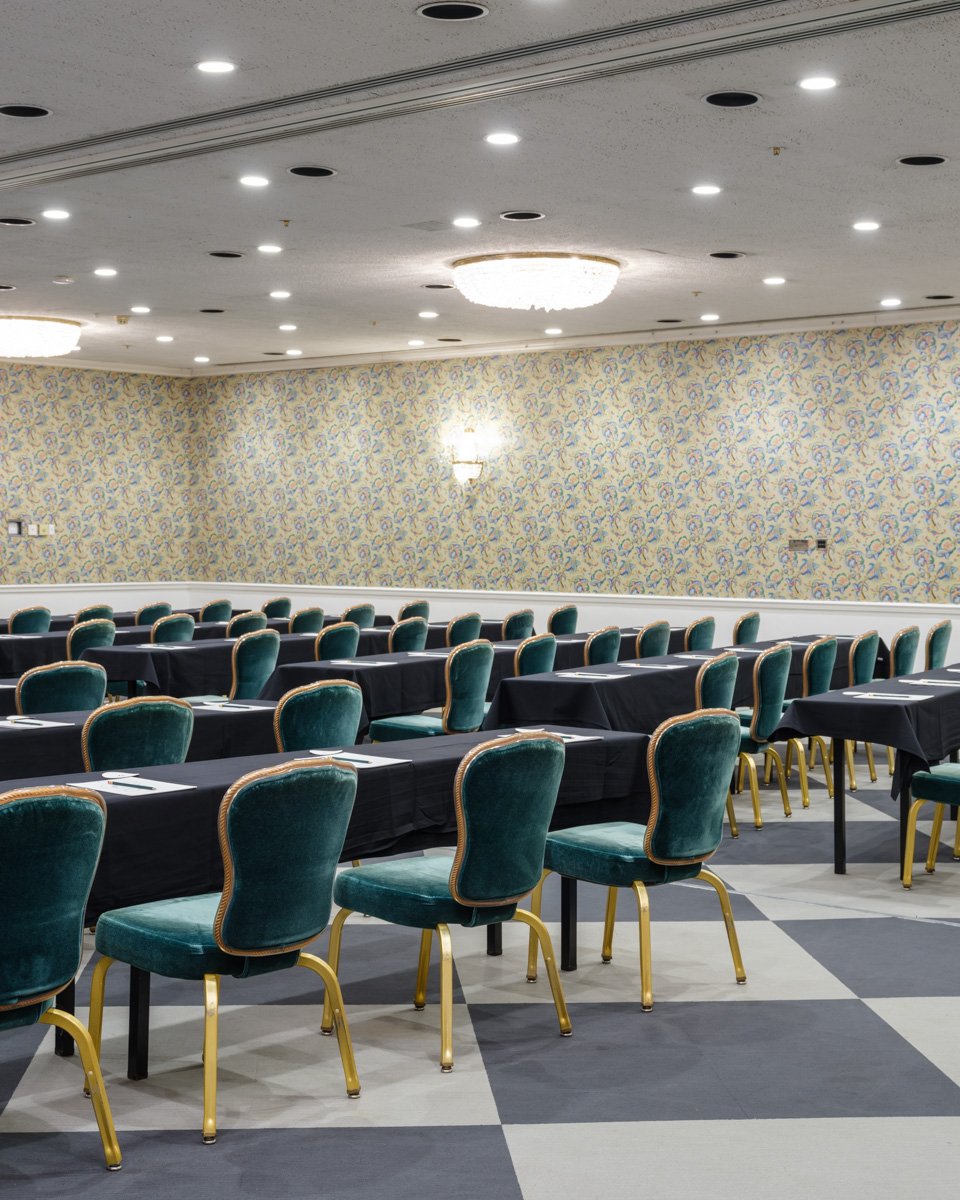In the 1960s, a top-secret nuclear bunker was built underneath the luxurious Greenbrier Resort in West Virginia to house all 535 members of Congress in the event of a nuclear attack.
Although a closely guarded secret, parts of the bunker were, in fact, part of the Greenbrier Hotel (which happens to have the most amazing interior design by renowned Dorothy Draper) and would have been sealed off by secret blast doors in the event of an attack. Conferences were regularly held in the halls intended to be used for sessions of Congress, with guests blissfully unaware that they were inside a top-secret nuclear bunker.
A hidden passage, marked by a door which reads, “Danger: High Voltage Keep Out,” leads to the rest of the bunker. In the event of an attack, members of Congress would have first been ushered to the decontamination room, where they would have stripped, showered, and put on uncontaminated clothes. The dormitories comprise 18 rooms, each built to house 60 people in metal bunk beds. There is also a kitchen and a 400-seat cafeteria, which was at one point decorated with fake windows featuring scenic views.
The bunker’s power room includes a “pathological waste incinerator” designed to cremate bodies. The bunker also has a hospital, operating room, and pharmacy, which once kept a plentiful supply of antidepressants. The bunker maintained “a tiny jail with two boxes of straitjackets” just in case “congressmen went bonkers” and a stash of riot gear.
The bunker also includes vast television, radio, and communications facilities. In the event of an attack, members of Congress would have been expected to give speeches broadcast to whatever was left of the American population. The TV conference room even includes a backdrop of the Capital Building, giving the illusion of normalcy.
After its construction, the Greenbrier bunker was maintained by 12-15 permanent government employees who worked undercover as members of an Arlington-based television repair company called Forsythe Associates, who pretended to be doing TV work for the hotel. The bunker remained secret until 1992, when a Washington Post article revealed its existence. The bunker was quickly decommissioned, being useless now – the secure location was one of the primary guarantees for its defence.
Part of a long-term project I am working on called "How We Learned to Stop Worrying".


